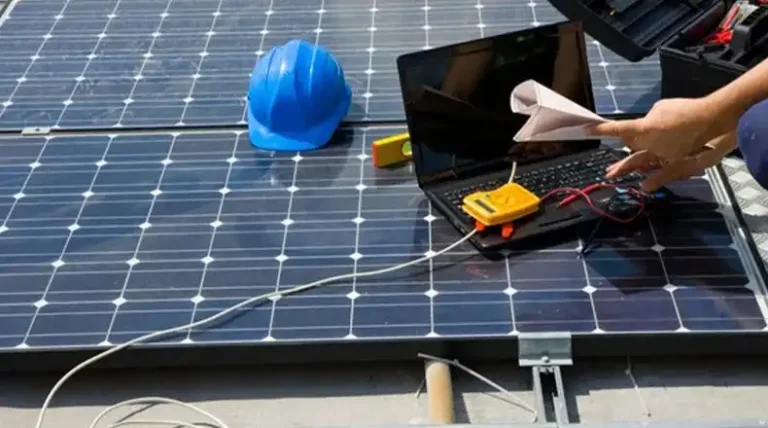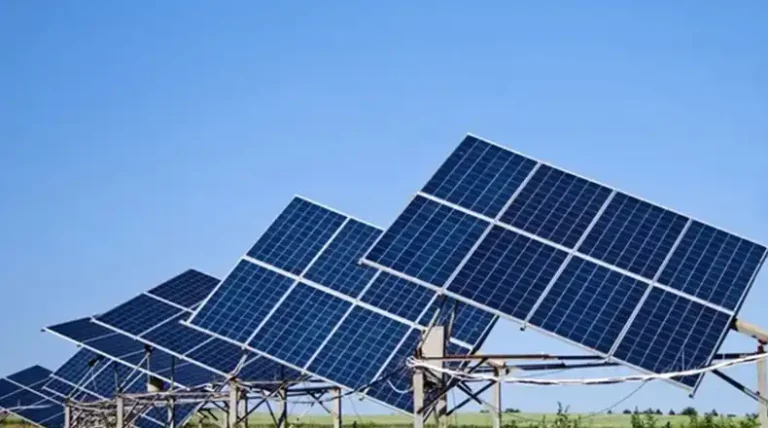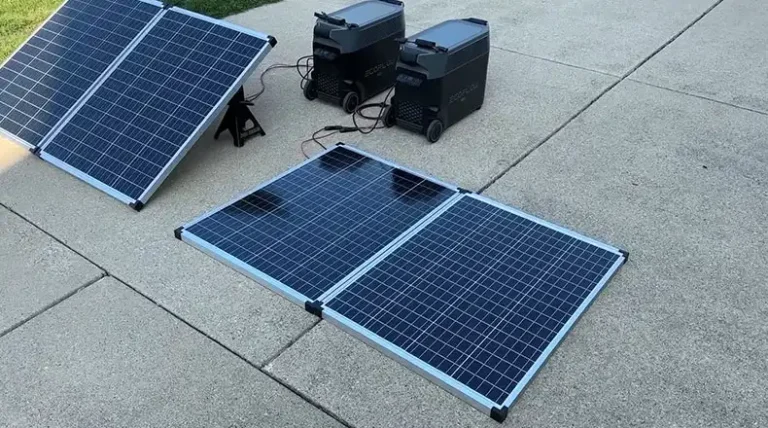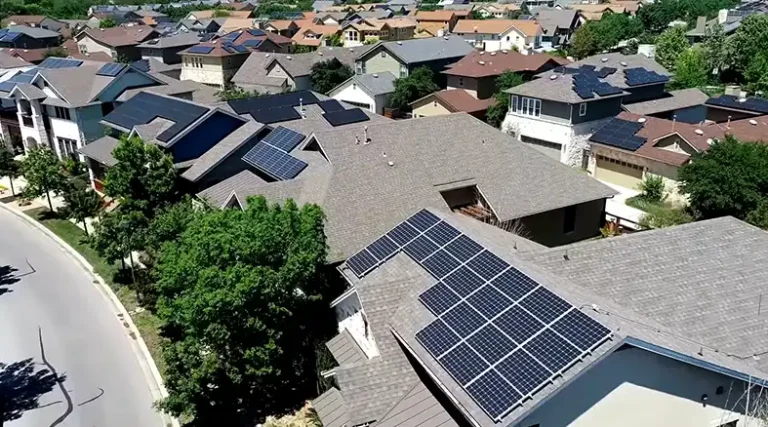Can We Run Lift Using Solar Power? General Discussion
Reducing environmental impact is crucial today. As we are adapting solar power to reduce our carbon footprint, a common question arises: “Can we run lift using solar power?”
The short answer is yes, it is possible to run lifts using solar power. However, the implementation of this technology requires a careful understanding of the energy requirements, system design, and practical considerations.
In this guide, I’ll help you explore the intricacies of solar-powered lifts, their feasibility, benefits, and challenges. Read on and gain insights to make informed decisions about implementing this innovative, sustainable solution.
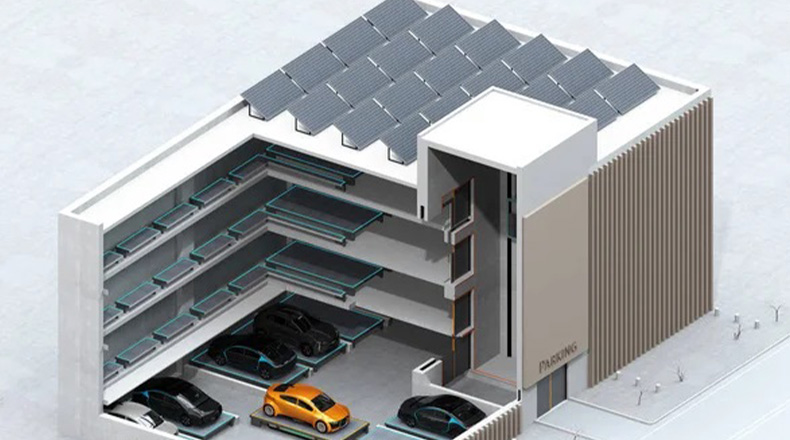
Is It Possible to Use Solar Power for Lifts?
Absolutely! With the advancement of solar photovoltaic (PV) technology and energy storage systems, it is entirely possible to power lifts using solar energy. The idea of solar-powered lifts revolves around utilizing PV panels to generate electricity, which is then used to power the lift’s motor and other electrical components. This approach eliminates the need for traditional grid-based electricity, making it an environmentally friendly and sustainable solution. However, the initial implementation of solar lift may require careful planning and investment.
How Much Energy Can Be Produced by Solar Panels, Are They Sufficient for Lifts?
The amount of energy produced by solar panels depends on several factors, including the panel size, efficiency, orientation, and local solar irradiance levels. High-quality solar PV systems can generate substantial amounts of electricity, often more than enough to meet the energy requirements of lifts.
However, it’s essential to accurately calculate the lift’s energy consumption and design a solar PV system with sufficient panel capacity and battery storage to ensure uninterrupted operation, even during periods of low sunlight or at night. With proper system sizing and energy management strategies, solar panels can indeed provide sufficient power to run lifts efficiently and reliably.
The Power Requirement For Operating A Lift
The power requirement for operating a lift varies depending on factors such as the lift’s load capacity, travel distance, speed, and the number of stops. Typically, a standard passenger lift can have a power requirement ranging from 5 kW to 20 kW or more.
It’s crucial to accurately calculate the energy requirements to ensure the solar PV system and battery storage are adequately sized to meet the lift’s power needs. Consulting with lift manufacturers or energy experts is recommended to obtain precise power consumption figures for a specific lift installation.
How Solar-Powered Lifts Work
Solar-powered lifts typically consist of the following key components:
- Solar PV Panels: These panels are strategically mounted on the building’s roof or other suitable locations to capture sunlight and convert it into electrical energy.
- Battery Storage System: The generated electricity is stored in rechargeable batteries, ensuring a consistent and reliable power supply, even during periods of low sunlight or at night.
- Inverter: The inverter converts the direct current (DC) electricity stored in the batteries into alternating current (AC) electricity, which is required to operate the lift’s motor and other electrical components.
- Lift Motor and Control System: The lift’s motor and control system are designed to operate on the AC electricity supplied by the inverter, allowing the lift to move between floors as required.
Advantages of Solar-Powered Lifts
Implementing solar-powered lifts offers several advantages:
- Environmental Benefits: By harnessing renewable solar energy, these lifts significantly reduce the carbon footprint associated with traditional electricity generation, contributing to a more sustainable future.
- Cost Savings: While the initial installation costs may be higher, solar-powered lifts can lead to long-term savings on electricity bills, especially in regions with high electricity rates or abundant sunlight.
- Energy Independence: Solar-powered lifts reduce reliance on the grid, providing a level of energy independence and resilience against power outages or disruptions.
- Low Maintenance: Solar PV systems require relatively low maintenance compared to traditional energy sources, resulting in reduced operational costs over time.
Challenges and Considerations of Using Solar-Powered Lifts
While solar-powered lifts offer numerous benefits, there are also some challenges and considerations to keep in mind:
- Initial Investment: The upfront costs of installing solar PV systems, and batteries, and integrating them with the lift system can be substantial, which may deter some building owners or managers.
- Space Requirements: A sufficient roof or surface area is needed to accommodate the solar PV panels, which may be a constraint in some buildings or urban areas with limited space.
- Intermittency and Energy Storage: Solar energy is intermittent, meaning it is only available during daylight hours. Adequate battery storage capacity is crucial to ensure uninterrupted lift operation, even during periods of low sunlight or at night.
- Energy Requirements and System Sizing: To design an efficient and reliable solar-powered lift system, it is essential to accurately calculate the energy requirements of the lift. This includes factors such as the lift’s load capacity, travel distance, and frequency of use. Based on these calculations, the appropriate size and number of solar PV panels, as well as the battery storage capacity, can be determined.
- Integration with Building Management Systems: To optimize energy efficiency and monitor system performance, solar-powered lift systems can be integrated with building management systems (BMS) or energy management systems (EMS). These systems allow for real-time monitoring of energy production, consumption, and storage levels, enabling proactive maintenance and efficient energy management.
- Maintenance and Monitoring: Solar PV systems and batteries require regular maintenance and monitoring to ensure optimal performance and longevity, which can add to operational costs.
- Regulatory and Legal Considerations: Depending on the location, there may be specific regulations, building codes, and permitting requirements that need to be addressed before implementing solar-powered lift systems.
Despite these challenges, the potential benefits of solar-powered lifts make them an attractive option for sustainable and energy-efficient building design and operation.
So, How Reliable Is Solar Power For Running A Lift?
The reliability of solar power for running a lift depends on several factors, including the available sunlight, system design, and battery storage capacity.
In regions with abundant and consistent sunlight, solar power can be a highly reliable source for powering lifts. However, in areas with frequent cloud cover or seasonal variations in solar irradiance, the reliability may be impacted.
To ensure reliable lift operation, it’s essential to incorporate adequate battery storage capacity to provide backup power during periods of low sunlight or at night. Proper system design, including redundant power sources (e.g., grid connections or backup generators), can further enhance reliability.
Regular maintenance and monitoring of the solar PV system and batteries are also crucial to maintaining optimal performance and reliability over time.
Conclusion
Utilizing the power of the sun to operate lifts is an innovative and sustainable approach that offers numerous benefits while addressing the pressing need for energy efficiency and environmental consciousness. While there are challenges to overcome, the potential advantages, including cost savings, energy independence, and reduced carbon footprint, make solar-powered lifts an attractive solution for building owners, operators, and the public. If you have any further questions or need additional clarification on the topic of solar-powered lifts, feel free to leave a comment below. We appreciate you taking the time to read this comprehensive guide and wish you success in exploring sustainable solutions for your lift requirements.
FAQs
Will Solar Powered Lift Work Efficiently On Cloudy Or Low Sunlight Days?
Yes, solar-powered lifts can still operate efficiently on cloudy or low sunlight days, thanks to the integration of battery storage systems. The batteries store excess energy generated during sunny periods, allowing the lift to draw power from the stored energy when solar production is low. However, it’s important to note that the overall efficiency and performance of the system may be reduced on cloudy or low sunlight days.
Can Solar-Powered Lifts Be Used At Night?
Yes, solar-powered lifts can be used at night, thanks to the incorporation of battery storage systems. During daylight hours, the solar PV panels generate electricity, which is stored in the batteries. When the sun is not available, such as at night, the lift can draw power from these stored batteries, enabling continuous operation. However, it’s important to note that the duration of night-time operation will depend on the battery capacity and the lift’s power consumption.
How Long Solar Panels Used In Lifts Last?
The lifespan of solar panels used in lift systems can vary depending on factors such as panel quality, installation conditions, and maintenance practices. Generally, high-quality solar panels can have a lifespan of 25-30 years or more.
Can Solar-Powered Lifts Operate During Power Outages?
Yes, solar-powered lifts can operate during power outages, thanks to the integration of battery storage systems. The batteries store energy generated by the solar panels, allowing the lift to draw power even when the grid is down.
How Long Can A Solar-Powered Lift Run On Battery Power Alone?
The duration a solar-powered lift can run on battery power alone depends on the battery capacity and the lift’s energy consumption. Typical battery backups may provide several hours to a few days of operation during periods of low solar production.
Are Solar-Powered Lifts More Expensive Than Traditional Lifts?
Solar-powered lifts generally have higher upfront installation costs due to the solar PV system and battery storage components. However, they can offer long-term cost savings on electricity bills and reduced maintenance costs.
Can Existing Lifts Be Retrofitted With Solar Power Systems?
Yes, in many cases, existing lifts can be retrofitted with solar power systems, provided there is sufficient space for installing solar panels and the necessary electrical modifications can be made to integrate the system with the lift’s operations.

![[Explained] What Size Fuse for 3000 Watt Amp for Solar Inverter?](https://www.itekenergy.com/wp-content/uploads/2023/08/What-Size-Fuse-for-3000-Watt-Amp-for-Solar-Inverter-768x428.webp)
